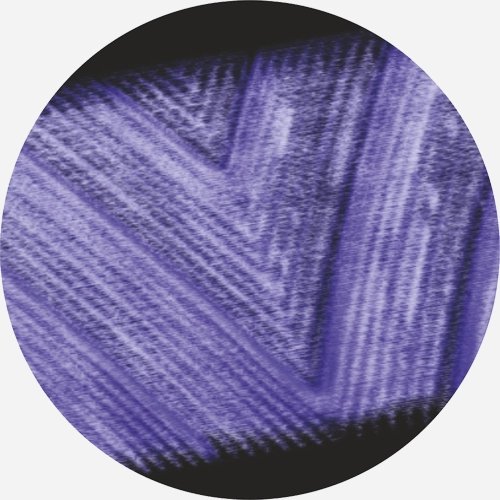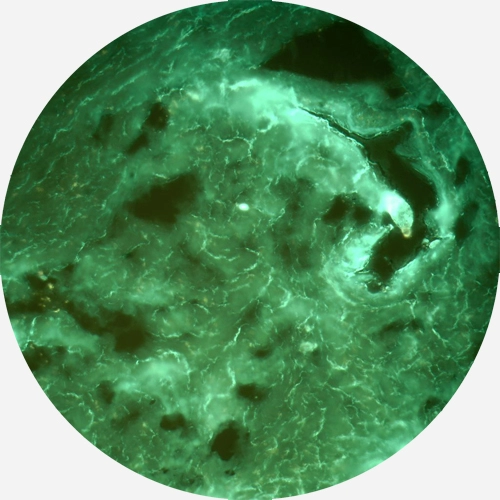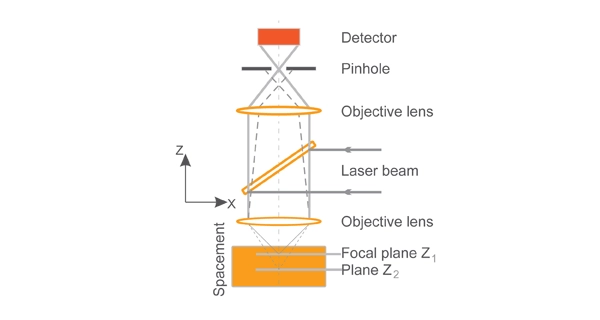Raman confocal laser scanning microscopy: theory
Confocal Laser Scanning Microscope (CLSM) has become a widely recognized research instrument in recent years. Confocal microscopy offers several advantages over conventional wide-field optical microscopy, including the ability to control depth of field, elimination or reduction of background information away from the focal plane (that leads to image degradation) and the capability to collect serial optical sections from thick specimens. CLSM is widely utilized in biology and medicine where fluorescent method is generally employed. Another field of application is science of materials with obtaining extremely high quality images and spatial resolution in reflected laser light. High resolution optical images provide an effective way of detection of defects in semi-conductive materials.
In conventional microscopy a wide cone of illumination is focused over a large volume of the specimen which is uniformly and simultaneously illuminated. The result is a significant amount of signal due to emitted background light and fluorescence originating from areas above and below the focal plane, which seriously reduces resolution and image contrast. In a confocal microscope the laser illumination source is first expanded to fill the objective rear aperture, and then focused by the lens system to a very small spot at the focal plane . The size of the illumination point depends upon the objective numerical aperture. The image of the extended specimen is generated by scanning the focused laser beam across a defined area in a raster pattern controlled by two mirrors driven by galvanometer motors.
One of the most important component of the confocal microscope is the pinhole aperture, which acts as a spatial filter at the conjugate image plane positioned directly in front of the photomultiplier. The pinhole aperture serves to exclude fluorescence signals from out of- focus features positioned above and below the focal plane. The pinhole aperture also serves to eliminate much of the stray light passing through the optical system. As a result, the detector registers only the light passing through a pinhole.
The confocal principle is diagrammatically presented in Figure. It can be seen that a pinhole blocks the scattered light of the specimen in Z2 plane and only a spectrum of Z1 plane (a focal pane) is registered. The focused and axial light beams are delivered to the detector, the out-of-focus and off-axis light beams are blocked. This is the way the detection of specimen volume depth is limited. Thus, a confocal microscope allows to get image of thin optical layers, layer-by-layer focusing up to 80 µm deep. Under certain conditions it is possible to obtain thickness of a layer ranging 500 nm or less.
The primary advantage of CLSM is the ability to produce thin optical sections through fluorescent specimens. The images are acquired point-by-point. Image information is restricted to a well-defined plane, contrast and definition are improved due to the reduction in background fluorescence and improved signal-to-noise. With most confocal microscopy software packages optical sections are collected and then reconstructed with a computer, allowing three-dimensional representation of the specimen which contains object spatial pattern information.





